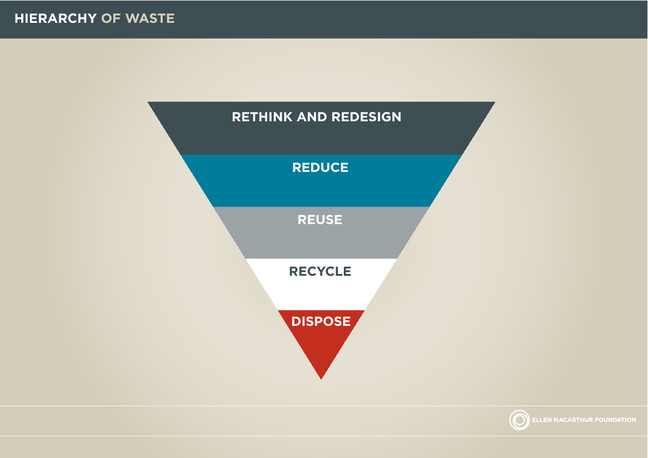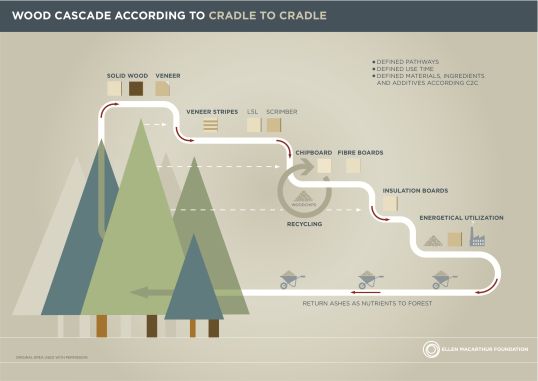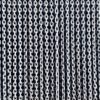 The Ellen MacArthur Foundation believes that the circular economy provides a coherent framework for systems level re-design and as such offers us an opportunity to harness innovation and creativity to enable a positive, restorative economy. Here you will find a series of articles to help familiarise yourself with the circular economy model, its principles, related schools of thought, and an overview of circular economy news from around the world.
The Ellen MacArthur Foundation believes that the circular economy provides a coherent framework for systems level re-design and as such offers us an opportunity to harness innovation and creativity to enable a positive, restorative economy. Here you will find a series of articles to help familiarise yourself with the circular economy model, its principles, related schools of thought, and an overview of circular economy news from around the world.
The linear ‘take, make, dispose’ model relies on large quantities of easily accessible resources and energy, and as such is increasingly unfit for the reality in which it operates. Working towards efficiency—a reduction of resources and fossil energy consumed per unit of manufacturing output—will not alter the finite nature of their stocks but can only delay the inevitable. A change of the entire operating system seems necessary.
The circular economy principle
The circular economy refers to an industrial economy that is restorative by intention; aims to rely on renewable energy; minimises, tracks, and hopefully eliminates the use of toxic chemicals; and eradicates waste through careful design. The term goes beyond the mechanics of production and consumption of goods and services, in the areas that it seeks to redefine (examples include rebuilding capital including social and natural, and the shift from consumer to user). The concept of the circular economy is grounded in the study of non-linear, particularly living systems.
A major outcome of taking insights from living systems is the notion of optimising systems rather than components, which can also be referred to as ‘design to fit’—by analogy, the tree is nothing without the forest. It involves a careful management of materials flows, which in the circular economy are of two types as described by McDonough and Braungart (Cradle to Cradle, Re-making the way we make things): biological nutrients, designed to re-enter the biosphere safely and build natural capital, and technical nutrients, which are designed to circulate at high quality without entering the biosphere.
As a result, the circular economy draws a sharp distinction between the consumption and use of materials: circular economy advocates the need for a ‘functional service’ model in which manufacturers or retailers increasingly retain the ownership of their products and, where possible, act as service providers—selling the use of products, not their one-way consumption. This shift has direct implications for the development of efficient and effective take-back systems and the proliferation of product- and business model design practices that generate more durable products, facilitate disassembly and refurbishment and, where appropriate, consider product/service shifts. As circular economy pioneer Walter Stahel explains:
The linear model turned services into products that can be sold, but this throughput approach is a wasteful one. (…) In the past, reuse and service-life extension were often strategies in situations of scarcity or poverty and led to products of inferior quality. Today, they are signs of good resource husbandry and smart management.
Link: See Walter Stahel's video lecture by clicking here
Design out waste

{jathumbnail off images="images/content_01_2014/Wood_Cascade_Cradle_to_Cradle_1.jpg"}Waste does not exist when the biological and technical components (or ‘materials’) of a product are designed by intention to fit within a biological or technical materials cycle, designed for disassembly and re-purposing. The biological materials are non-toxic and can be simply composted. Technical materials—polymers, alloys and other man-made materials are designed to be used again with minimal energy and highest quality retention (whereas recycling as commonly understood results in a reduction in quality and feeds back into the process as a crude feedstock). Coined by Braungart and McDonough, the phrase “waste is food” summarises the circular philosophy – though as Braungart himself would say today, “the word waste should not even be in there, there is no such thing, everything should be food.”
Build resilience through diversity
Modularity, versatility, and adaptivity are prized features that need to be prioritised in an uncertain and fast-evolving world. Diverse systems with many connections and scales are more resilient in the face of external shocks than systems built simply for efficiency—throughput maximisation driven to the extreme results in fragility.
Work towards using energy from renewable sources
Systems should ultimately aim to run on renewable sources. As Vestas, the wind energy company, puts it: ‘Any circular story should start by looking into the energy involved in the production process’.
Systems should ultimately aim to run on renewable energy—enabled by the reduced threshold energy levels required by a restorative, circular economy. The agricultural production system runs on current solar income but significant amounts of fossil fuels are used in fertilisers, farm machinery, processing and through the supply chain. More integrated food and farming systems would reduce the need for fossil-fuel based inputs and capture more of the energy value of by-products and manures. They would also increase the demand for human labour—which Walter Stahel has argued should be an integral part of this evolution: ‘Shifting taxation from labour to energy and material consumption would fast-track adoption of more circular business models; it would also make sure that we are putting the efficiency pressure on the true bottleneck of our resource-consuming society/economy—there is no shortage of labour and (renewable) energy in the long term.’
Think in systems
The ability to understand how parts influence one another within a whole, and the relationship of the whole to the parts, is crucial. Elements are considered in relation to their environmental and social contexts. While a machine is also a system, it is clearly narrowly bounded and assumed to be deterministic. Systems thinking usually refers to the overwhelming majority of real-world systems: these are non-linear, feedback-rich, and interdependent. In such systems, imprecise starting conditions combined with feedback lead to often surprising consequences, and to outcomes that are frequently not proportional to the input (runaway or ‘undamped’ feedback). Such systems cannot be managed in the conventional, ‘linear’ sense, requiring instead more flexibility and more frequent adaptation to changing circumstances.
Systems thinking emphasises stocks and flows. The maintenance or replenishment of stock is inherent in feedback-rich systems, which are assumed to have some longevity, and has the potential to encompass regeneration and even evolution in living systems. In a business context, their modular and adaptive properties mean more leeway for innovation and the development of diversified value chains, as well as less dependence on purely short-term strategies. Understanding flows in complex systems also tells us something more about the trade-off between efficiency and resilience. Systems that are increasingly efficient have fewer nodes, fewer connections, and greater throughput but also become increasingly brittle or—to use Nassim Taleb’s term— ‘fragile’. This makes them vulnerable to the effects of shocks like price volatility or interruption of supply. Systems with many nodes and connections are more resilient, but can become sclerotic—slow to change (at the extreme), and thus ineffective.
Effectiveness is the sweet spot where resilience and efficiency interplay: efficiency (doing things right) is welcome, but in the service of effectiveness (doing the right thing), with the prime objective of ensuring the business fits the economy. This is another way of seeing the systems optimisation question discussed earlier. Because more of the flows of materials, goods, and services are valorised in a circular economy and because risk is reduced, the firm is compensated for the reduced upside of efficiency with lower costs, additional cash flows and—in many cases—fewer regulatory concerns (as wastes are eliminated, or are now benign flows).
Think in cascades
For biological materials, the essence of value creation lies in the opportunity to extract additional value from products and materials by cascading them through other applications. In biological decomposition, be it natural or in controlled fermentation processes, material is broken down in stages by microorganisms like bacteria and fungi that extract energy and nutrients from the carbohydrates, fats, and proteins found in the material. For instance, going from tree to furnace forgoes the value that could be harnessed via staged decomposition through successive uses as timber and timber products before decay and eventual incineration.
The complete biological entity should be considered. Mycelium packaging, an innovation based on the bonding properties of mushroom ‘roots’, uses the entire ‘living polymer’—as well as the organic waste system on which it grows. A holistic, cascade-based relationship with coffee would consider the entire fruit (the cherry) and the whole coffee-growing protocol. The entire shrub in its context also needs integrating: as a shade-loving plant, it may well be positioned adjacent to other trees. In addition, coffee production generates 12 million tonnes of agricultural waste per year. This waste could be used to replace hardwoods traditionally used as growth media to farm high-value tropical mushrooms, a market with double-digit growth (currently USD 17 billion globally). Coffee waste is in fact a superior medium, as it shortens the production period. The residue (after being used as a growth medium) can be reused as livestock feed, as it contains valuable enzymes, and can be returned to the soil in the form of animal manure at the end of the cascade.
Katja Hansen – the Cradle to Cradle concept in detail
Katja Hansen is a pioneering contributor to the scientfic basis for the Cradle to Cradle design paradigm. She is Senior Researcher at The Academic Chair Cradle to Cradle for Innovation and Quality Rotterdam School of Management, Erasmus University. She is also a lead trainer and engineering expert working with EPEA Internationale Umweltforschung on implementing the Cradle to Cradle concept with partner companies, and manages the EU supported C2C Islands project.
In the field of water management she co-designed, constructed and scientifically tested one of the main demonstration projects for the 1992 UNCED Rio Earth Summit. From 1992 to 1998 she was the scientific and project director of an EU funded project for bionutrient recycling in Brazil and China. The pilot projects demonstrated safe and highly productive re-use of nutrients from effluent, generating clean water as a byproduct.
Katja Hansen was a founding contributor to the Brazilian NGO “O Instituto Ambiental” which took over the technology and built facilities across Central and South America. Some facilities were built in Haiti where they survived a devastating earthquake and continued purifying water and recycling nutrients when other sanitation systems failed. The technology is now supported by UNEP in Haiti.




